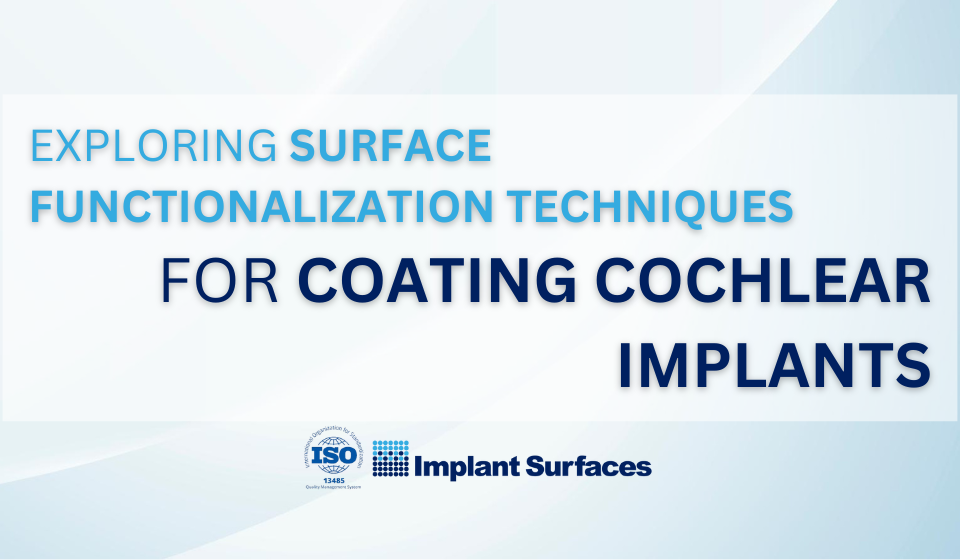
Unveiling the Influence of Surface Roughness on Soft Tissue Adhesion in Dental Implants
April 28, 2024
Innovations in Surface Coatings: Addressing Implant Wear and Friction
April 30, 2024Maxillofacial implants play a crucial role in restoring facial aesthetics and function for individuals with craniofacial defects resulting from trauma, congenital anomalies, or oncologic resections. Osteointegration, the direct structural and functional connection between living bone and the surface of an implant, is paramount for the long-term success of maxillofacial implants. In recent years, significant advancements have been made in surface coating techniques aimed at enhancing osteointegration and improving clinical outcomes for patients undergoing maxillofacial reconstruction.
- Plasma Spraying: A Versatile Approach to Surface Modification Plasma spraying is a well-established technique used to deposit biocompatible coatings onto implant surfaces. This process involves heating a powdered coating material, such as hydroxyapatite (HA) or titanium plasma spray (TPS), to a molten state and projecting it onto the implant substrate using a high-velocity plasma jet. The resulting coating exhibits a porous microstructure that promotes osseointegration by providing an ideal substrate for bone ingrowth. Recent innovations in plasma spraying technology have enabled the precise control of coating morphology and composition, allowing for tailored surface modifications to suit specific clinical applications in maxillofacial surgery.
- Biomimetic Coatings: Mimicking Nature’s Blueprint for Enhanced Integration Biomimetic coatings aim to replicate the biochemical composition and hierarchical structure of natural bone, thereby promoting a biological response at the implant-tissue interface. These coatings often incorporate bioactive molecules, such as growth factors or extracellular matrix proteins, to stimulate cellular activity and facilitate tissue regeneration. Additionally, biomimetic coatings can mimic the nanostructured architecture of bone at the nanoscale, facilitating cell adhesion, proliferation, and differentiation. By harnessing the principles of biomimicry, researchers are developing novel coating strategies that hold immense promise for improving osteointegration in maxillofacial implants.
- Surface Modification via Laser Processing: Precision Engineering for Enhanced Integration Laser surface modification is a cutting-edge technique that offers precise control over surface topography and chemistry, enabling tailored modifications to implant surfaces at the micro- and nano-scale. By using laser energy to selectively ablate or melt the implant surface, researchers can create intricate patterns, micro-roughness, or nanostructures that promote cell adhesion and tissue ingrowth. Moreover, laser processing can be combined with other surface modification techniques, such as plasma spraying or biomimetic coating deposition, to achieve synergistic effects and further enhance osteointegration. The ability to engineer implant surfaces with submicron precision makes laser processing a valuable tool in the quest to optimize osteointegration in maxillofacial implants.
Conclusion: As the field of maxillofacial implantology continues to evolve, so too do the techniques and technologies employed to enhance osteointegration and improve patient outcomes. Novel surface coating techniques, such as plasma spraying, biomimetic coatings, and laser surface modification, offer unprecedented opportunities to optimize implant surfaces for improved osseointegration in maxillofacial implants. By leveraging these innovative approaches, clinicians and researchers can pave the way for advancements in reconstructive surgery and empower patients to regain both form and function with confidence.




